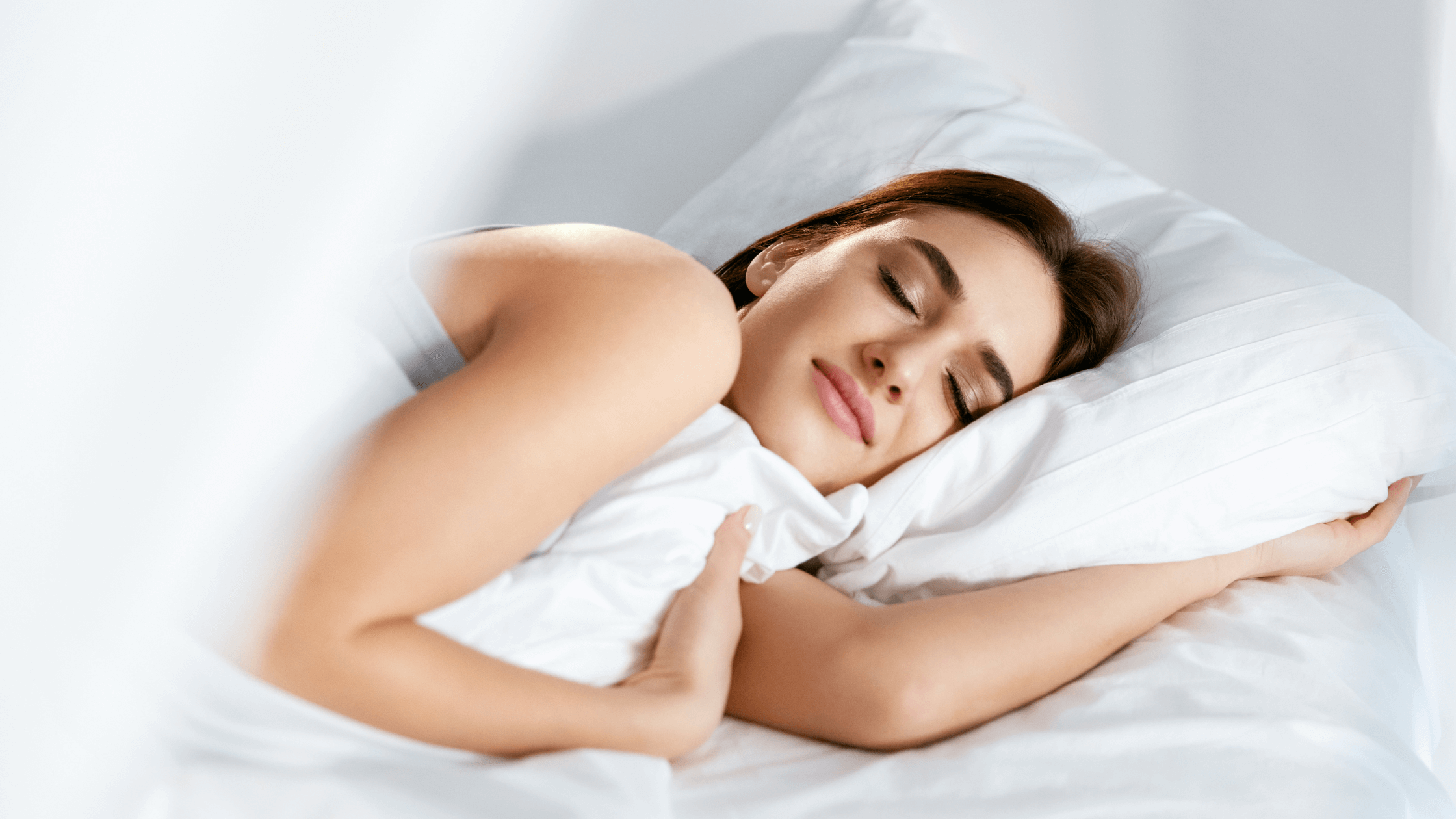6 Essential Sleeping Tips After Your Breast Augmentation Procedure7 min read

Caroline Hedges

Breast augmentation, while transformative, demands attention to post-surgical care to ensure optimal results. One essential aspect of recovery many overlook revolves around sleep. Adequate rest post-procedure is paramount not only for healing but also for mental well-being. Let’s journey together to discover how to ensure your nights are restful after your augmentation.
Understanding the Importance of Proper Sleep Post-Surgery
Surgery, no matter how minute or significant, thrusts the body into a recovery mode where every bit of care counts. Sleep, an often underrated aspect of post-surgical care, takes the front seat in ensuring not just physical healing, but also emotional recuperation.
While the immediate focus post-breast augmentation might be on pain management, avoiding infections, and getting accustomed to the new physical changes, adequate and sound sleep is the cornerstone of a holistic recovery process.
Why Sleep is Essential After Surgery
Sleep is the body’s natural mechanism for restoration. After an extensive procedure like breast augmentation, the body is in overdrive to repair itself. With deep sleep cycles, cellular repair accelerates, immune responses are optimized, and inflammation is curtailed. In essence, sleep is the secret sauce to a swift recovery.
The Role of Sleep in Pain Management
Beyond its restorative properties, sleep is a potent tool for pain management. Chronic sleep deprivation can lower pain threshold, making you more sensitive to pain. Contrarily, sound sleep can minimize the reliance on painkillers, promoting a natural, holistic recovery.
Choosing the Perfect Sleep Position
Nestling into a cozy sleep position might be second nature for most of us, but post-breast augmentation, it’s a whole new ball game. The way we position ourselves during sleep can profoundly impact the healing process, affecting not just the surgical site but also our overall comfort during the night. Although it might be tempting to revert to old habits or favored sleeping positions, the aftermath of a surgical procedure necessitates deliberate choices.

Elevate Your Upper Body
Elevation is your friend during the initial recovery phase. Propping your upper body up at a slight angle can significantly reduce swelling. It minimizes fluid accumulation and facilitates optimal blood flow, aiding in faster healing and reduced discomfort.
Side Sleeping: Yay or Nay?
For the first few weeks post-surgery, it’s a “Nay”.
Side sleeping exerts pressure on the implants, potentially leading to displacements or complications. But fret not, as this isn’t a lifelong restriction. With your surgeon’s nod, you can gradually reintroduce side sleeping, using supportive pillows to ensure your comfort and safety.
Creating a Comfortable Sleeping Environment
After a transformative procedure like breast augmentation, your familiar bed might not offer the same comfort it once did. While we often emphasize the physical aspects of recovery, the ambiance in which you rest is equally crucial. It’s not just about the firmness of the mattress or the softness of the pillow; it’s about orchestrating an environment that ushers in tranquility, ensuring uninterrupted, quality sleep.
Optimal Room Temperature for Healing
Did you know that ambient room temperature can influence your healing? A cooler room, preferably between 65-70°F, not only supports sound sleep but also actively assists in post-surgical recovery. Cooler environments reduce the risk of swelling and ensure your comfort throughout the night.
Dim the Lights
Our body’s internal clock, or circadian rhythm, is significantly influenced by light. Reducing exposure to artificial light sources can bolster melatonin production, ensuring you drift faster into restful slumber. It’s more than just ambiance; it’s about aligning with your body’s natural rhythms.
Clothing Considerations
While clothing often reflects our style, it tends to take on a more practical function post-surgery.
While clothing often reflects our style, it tends to take on a more practical function post-surgery.
After breast augmentation, you aren’t just dressing for aesthetics but also for comfort, protection, and healing facilitation. While the lure of flaunting your new contours might be strong, the initial weeks post-operation require garments that cater to your body’s recovery needs.
The Right Sleepwear Post-Surgery
Post-operative comfort is paramount. Opt for breathable, soft, non-restrictive clothing. Cotton pajamas without tight elastics are ideal. Anything pressing against the surgical site is a strict no-no as it can lead to irritation or hamper the healing process.
Importance of Wearing a Support Bra
Your new assets need support, especially during the initial recovery phase. A post-surgical bra is designed to provide just the right amount of support without being overly constrictive. It safeguards against unnecessary movements that might disrupt the healing process.

Nutrition and Hydration
The adage, “You are what you eat,” holds more weight than ever post-surgery.
Beyond the stitches, bandages, and prescribed medications, the body yearns for the right nutrients to fuel its repair machinery.
The aftermath of a breast augmentation procedure isn’t just about external care but also about nurturing the body from within. Nutrition and hydration, in this context, become paramount. They not only speed up the healing process but also help combat some common post-operative symptoms such as fatigue or constipation.
Foods to Aid Sleep
Your diet can play a pivotal role in sleep quality. Incorporating tryptophan-rich foods can usher in sleepiness. Also, cherries, a natural source of melatonin, can be your bedtime snack, guiding you into dreamland.
Stay Hydrated, but Be Cautious
Hydration aids recovery, but overdoing it before bedtime can lead to frequent bathroom trips, disturbing your sleep. Aim for balance by hydrating well during the day and reducing intake a couple of hours before bed.
Relaxation Techniques
Whether you’ve recently undergone a surgical procedure or are grappling with everyday stresses, finding a moment of calm is crucial.
But how do you transition from chaos to tranquility?
The answer lies in mastering the art of relaxation techniques. These strategies, rooted in age-old practices and modern science, serve as an oasis in the desert of our hectic lives.

Deep Breathing Exercises
Deep breathing isn’t just about inhaling and exhaling. It’s a relaxation tool that calms your nervous system, reduces anxiety, and prepares your body for rest. A few minutes of deep, deliberate breathing can transition you into a state of calm, conducive to sleep.
The Magic of Aromatherapy
Nature offers solutions in the form of essential oils. Lavender, known for its sedative properties, and chamomile, renowned for its relaxation effects, can be integrated into your nighttime routine. Whether you choose to diffuse them or apply them topically, they can significantly elevate your sleep experience.
FAQ
Is Side Sleeping Off-Limits Permanently After Breast Augmentation?
No, it’s a temporary measure. Typically, after 4-6 weeks, with your surgeon’s approval, you can return to side sleeping.
What Precautions Should I Take if I'm a Natural Stomach Sleeper?
No, it’s a temporary measure. Typically, after 4-6 weeks, with your surgeon’s approval, you can return to side sleeping.
How Crucial is a Post-Surgical Bra During the Night?
Extremely! It provides consistent support, reducing movement and aiding in shaping. It’s a small investment with significant dividends in terms of recovery and contouring.
When Can I Return to My Pre-Surgery Sleep Habits?
Usually, within 6-8 weeks, you can. However, always follow your surgeon’s guidance, as individual recovery timelines might vary.
Is It Normal to Face Sleep Disturbances Post-Surgery?
Yes, it’s not uncommon. The discomfort, combined with anxiety, can disrupt sleep. Adhering to the tips above and seeking professional guidance can help address these concerns.
Why Do I Notice More Swelling When I Wake Up?
Extended periods of lying down can lead to fluid retention, causing morning swelling. Engaging in light movements and ensuring your upper body remains elevated can mitigate this side effect.

Start Your Breast Augmentation Journey With Dr. Chang!
Breast augmentation is an empowering journey, and adequate post-surgical care ensures its
success. Central to this care is sleep, a factor that plays a pivotal role in physical healing and emotional well-being. By adhering to the guidelines shared above, you can navigate this recovery phase with confidence and grace.
Meet us at 19500 Sandridge Way, Suite 350, Leesburg, VA 20176, or call us at (703) 574-4342 for a complimentary consultation with Board-Certified Plastic Surgeon Dr. Phillip Chang before moving forward with your procedure. If everything matches up, our team will help you navigate the entire process from beginning to end! Also, remember to check out our blog and social media for more information on plastic surgery and plastic surgery trends!
References
- “Can Cherries Help You Get a Better Night’s Sleep?” Cleveland Clinic, 29 June 2022, health.clevelandclinic.org/do-cherries-help-you-sleep/. Accessed 8 Aug. 2023.
- “Sleep and Pain – Pain Management.” painHEALTH, painhealth.csse.uwa.edu.au/pain-module/sleep-and-pain/. Accessed 8 Aug. 2023.
Let Us Help You!
Our office can provide you with helpful information, schedule a free consultation, and walk you through the many services and procedures we provide.
Contact Dr. Chang's Office:
More Articles For You

The Latest Techniques in Double Chin Removal in Leesburg, VA
In the charming town of Leesburg, VA, where looking good and feeling great are top

The Art of Refining the Side Profile of a Woman through Plastic Surgery
In the realm of cosmetic enhancements, the side profile of a woman holds a pivotal

Enhance Now, Pay Later: Plastic Surgery Payment Plans in Leesburg, VA
In the picturesque town of Leesburg, VA, pursuing beauty and self-improvement is a journey many

Areola Reduction for Men in Loudoun County
In the heart of Loudoun County, where the beauty of nature meets bustling urban life,
